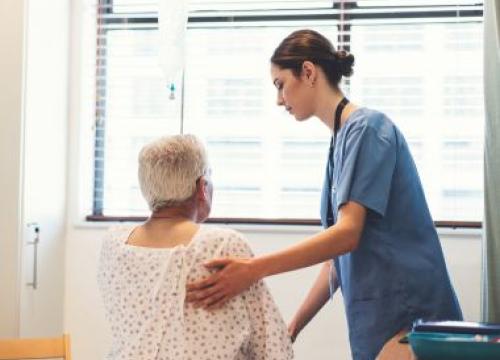Tips from the Pros: Maintaining Cognitive Brain Health in Parkinson's Disease

Maintaining cognitive brain health is a high priority for both people with Parkinson’s disease (PD) and family members. Though many living with Parkinson’s will not develop dementia, mild cognitive issues may emerge in 20 to 50 percent. As a result of this survey, a working group of experts led by Jennifer Goldman, MD, MS, at Rush University, a Parkinson’s Foundation Center of Excellence, was assembled to address this issue. In this month’s What’s Hot in PD? column, we share practical results from the working group that may be useful for both people with PD and their families.
There are potential pharmacological and non-pharmacological interventions that may be useful in addressing cognition (thinking and memory) in PD. The working group divided the recommendations for maintaining PD cognitive health into early and more advanced Parkinson’s.
Early Parkinson’s Disease
- Exercise according to guidelines from American College of Sports Medicine and American Heart Association
- Stay active socially; for example, spend time with friends or join a support group.
- Engage in cognitive training exercises.
- Learn coping strategies; for example, work with an occupational therapist or neuropsychologist on techniques for paying attention, remembering things or doing everyday tasks.
- Nutrition can affect cognition. Consider trying the Mediterranean diet.
- Take your time when doing tasks.
- Let your family and friends know if you are having trouble.
Seek help if feeling depressed or anxious
Advanced Parkinson’s Disease
Follow the above recommendations, in addition to:
- Develop and follow a highly structured daily routine
- Consider the use of medication for cognitive impairment; common medications include cholinesterase inhibitors and memantine
- Have an advanced directive in place (living will, treatments)
- For care partners: take care of your own health as well (see doctors as needed)
For care partners: seek out support such as counseling
Though more pharmacological treatments are needed, we advise people not to underestimate the value of implementing many of these techniques and considerations. You can have a happy life with PD but you need a winning strategy for brain health and cognition — and that strategy may not always include a pill.
Related Blog Posts

From Parkinson’s Foundation Research Center to Powerhouse: How Yale Became a Leader in Parkinson’s Science

Neuro Talk: Early-Onset Parkinson’s Disease (EOPD)





















